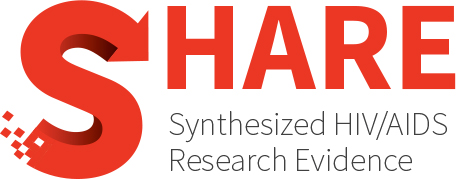Category Archives: Neurocognitive disorders
Optimal treatment of HIV-associated neurocognitive disorders: myths and reality. A critical review
Background: The aim of this study was to review the clinical data on the effectiveness of the pharmacotherapy of HIV-associated neurocognitive disorders (HANDs). Methods: A literature search of PubMed was...
HIV, depression, and cognitive impairment in the era of effective antiretroviral therapy
PURPOSE OF REVIEW: Mental health disorders, especially depression, are prevalent among people living with HIV (PLWH) and are associated with cognitive impairment (CI) among HIV-uninfected (HIV-) individuals. We conducted a...
Predictors of human immunodeficiency virus (HIV) infection in primary care among adults living in developed countries: A systematic review
BACKGROUND: Early diagnosis of human immunodeficiency virus (HIV) is important because antiretroviral therapies are more effective if infected individuals are diagnosed early. Diagnosis of HIV relies on laboratory testing and...
A review of long-term toxicity of antiretroviral treatment regimens and implications for an aging population
Human immunodeficiency virus (HIV) is a chronic infectious disease currently requiring lifelong antiretroviral therapy (ART). People living with HIV (PLWH) face an increased risk of comorbidities associated with aging, chronic...
Exercise and cognitive function in people living with HIV: A scoping review
BACKGROUND: Since the advent of antiretrovirals, people with HIV are living longer and have improved quality of life. However, 30-60% of these individuals experience cognitive impairment. Fortunately, physical activity has...
Interventions and approaches to integrating HIV and mental health services: A systematic review
Background: The frequency in which HIV and AIDS and mental health problems co-exist, and the complex bi-directional relationship between them, highlights the need for effective care models combining services for...
Systematic review and meta-analysis of secondary prophylaxis for prevention of HIV-related toxoplasmic encephalitis relapse using trimethoprim-sulfamethoxazole
A recent systematic literature and meta-analysis reported relative efficacy of trimethoprim-sulfamethoxazole (TMP-SMX) for the treatment of toxoplasmic encephalitis (TE) in HIV-infected adults. Here, we estimated relapse rates during secondary prophylaxis...
Changing the culture of neurodisability through language and sensitivity of providers: Creating a safe place for LGBTQIA+ people
BACKGROUND: There is an increasing interest in sexual and gender diversity in neurorehabilitation. Healthcare professionals wanting to improve their practice know the importance of understanding the needs and expectations of...
Cross-cultural assessment of HIV-associated cognitive impairment using the Kaufman assessment battery for children: A systematic review
INTRODUCTION: Despite improved efficacy of, and access to, combination antiretroviral therapy (cART), HIV-associated cognitive impairments remain prevalent in both children and adults. Neuropsychological tests that detect such impairment can help...
